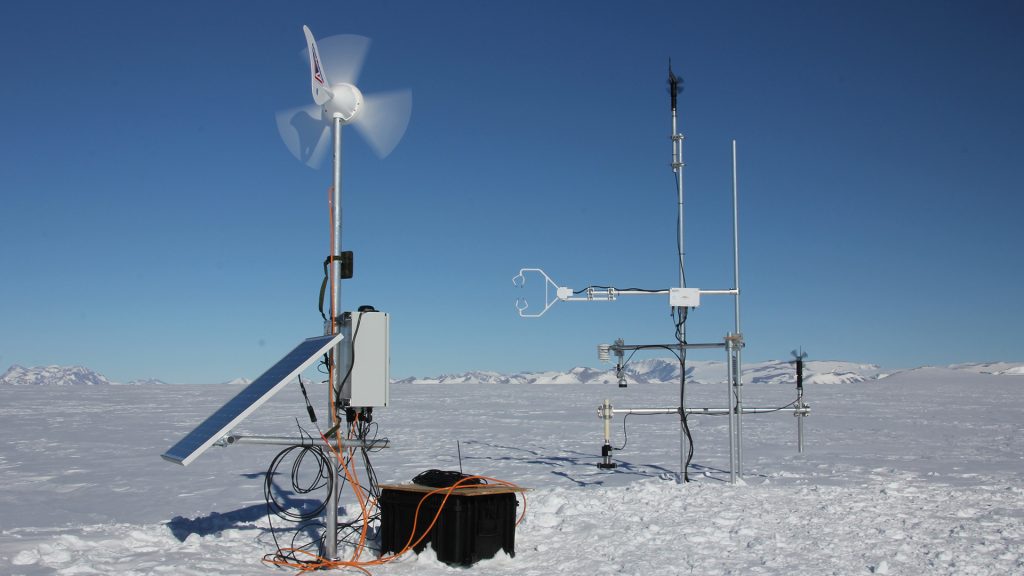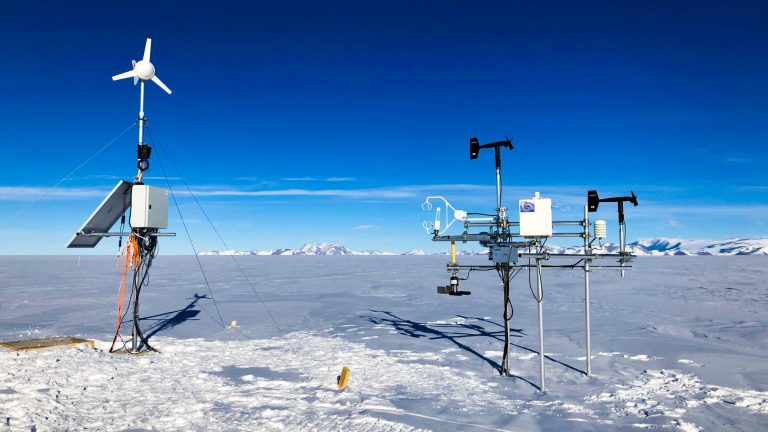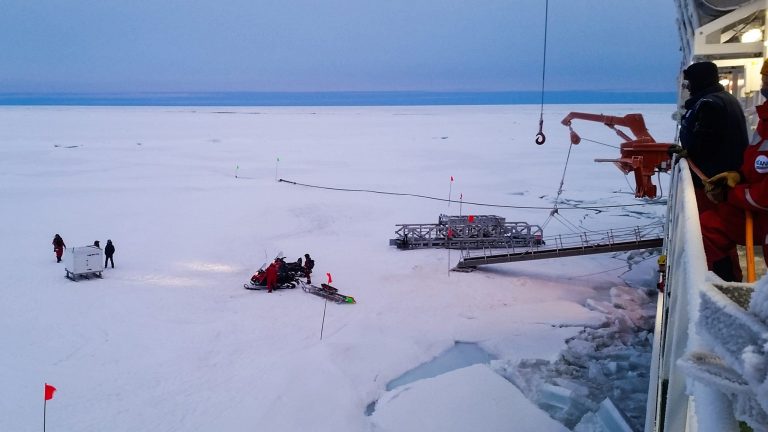The polar ice caps experience significant melt and their future fate is highly uncertain yet very important to forecast sea level rise. Precipitation quantities are not well constrained over the ice sheets and the process such as sublimation of precipitation in katabatic winds or of drifting and blowing snow are not quantitatively understood. CRYOS has set-up a first set of all-year autonomous measurement stations at several locations on the East Antarctic ice sheet to measure meteorology, snow deposition and – for the first time – a snow transport rate using the Japanese SPC sensor. These local measurements serve as validation points for modelling sublimation and the complete surface mass balance using advanced model systems such as Alpine3D (Lehning, Volksch et al. 2006, Zwaaftink, Lowe et al. 2011), which have been co-developed between SLF Davos and CRYOS or community models such as the Weather and Forecasting Model (WRF). To this end, we are currently coupling the in-house snow model SNOWPACK (Lehning, Bartelt et al. 1999, Zwaaftink, Cagnati et al. 2013) to WRF and expect a massive improvement in surface mass balance estimates from this coupling.

The grand question of snow and ice dynamics in the global climate system is complemented by basic research on flow – particle interactions, which CRYOS conducts in collaboration with SLF Davos e.g. in the cold wind tunnel (Walter, Horender et al. 2014) but also by developing a full physical understanding of snow transport (Comola and Lehning 2017), snow deposition mechanisms (Sommer, Wever et al. 2018) and snow sublimation (Sharma, Comola et al. 2018). The basic research on small-scale snow processes forms the basis for model development at the larger scale.
References:
Comola, F. and A. Lehning (2017). “Energy- andmomentum-conservingmodel of splash entrainment in sand and snow saltation.” Geophysical Research Letters44(3): 1601-1609.
Lehning, M., P. Bartelt, B. Brown, T. Russi, U. Stockli and M. Zimmerli (1999). “SNOWPACK model calculations for avalanche warning based upon a new network of weather and snow stations.” Cold Regions Science and Technology30(1-3): 145-157.
Lehning, M., I. Volksch, D. Gustafsson, T. A. Nguyen, M. Stahli and M. Zappa (2006). “ALPINE3D: a detailed model of mountain surface processes and its application to snow hydrology.” Hydrological Processes20(10): 2111-2128.
Sharma, V., F. Comola and M. Lehning (2018). “On the suitability of the Thorpe-Mason model for calculating sublimation of saltating snow.” Cryosphere12(11): 3499-3509.
Sommer, C. G., N. Wever, C. Fierz and M. Lehning (2018). “Investigation of a wind-packing event in Queen Maud Land, Antarctica.” Cryosphere12(9): 2923-2939.
Walter, B., S. Horender, C. Voegeli and M. Lehning (2014). “Experimental assessment of Owen’s second hypothesis on surface shear stress induced by a fluid during sediment saltation.” Geophysical Research Letters41(17): 6298-6305.
Zwaaftink, C. D. G., A. Cagnati, A. Crepaz, C. Fierz, G. Macelloni, M. Valt and M. Lehning (2013). “Event-driven deposition of snow on the Antarctic Plateau: analyzing field measurements with SNOWPACK.” Cryosphere7(1): 333-347.
Zwaaftink, C. D. G., H. Lowe, R. Mott, M. Bavay and M. Lehning (2011). “Drifting snow sublimation: A high-resolution 3-D model with temperature and moisture feedbacks.” Journal of Geophysical Research-Atmospheres116.

This main SNF research project of Prof. Lehning looks in detail at the snow – atmosphere interface. In particular, the snow transport processes saltation and suspension are investigated in a fundamental way in order to develop upscaling formulations and parameterizations, which can be used for large areas such as Antarctica. The main question is how much snow transport and snow sublimation contribute to the surface mass balance and therefore to the total mass balance of snow and ice in the extreme environments of the two poles and high mountains. Further key information on the project is found on the SNF web page: http://p3.snf.ch/project-179130.

The collaboration project (funded by SNF and DFG), targets the role of the snow cover on sea ice. Within the project, CRYOS has developed a new version of the famous SNOWPACK version, which now includes salinity dynamics and vapor transport. The model is now fit to produce snow mass balance and snow profiles for sea ice, which can be used to aid satellite retrievals of total sea ice thickness using microwave sensors. The collaboration is with the Alfred Wegener Institute and the University of Hamburg. More information on the SNF page: http://p3.snf.ch/project-160667-.